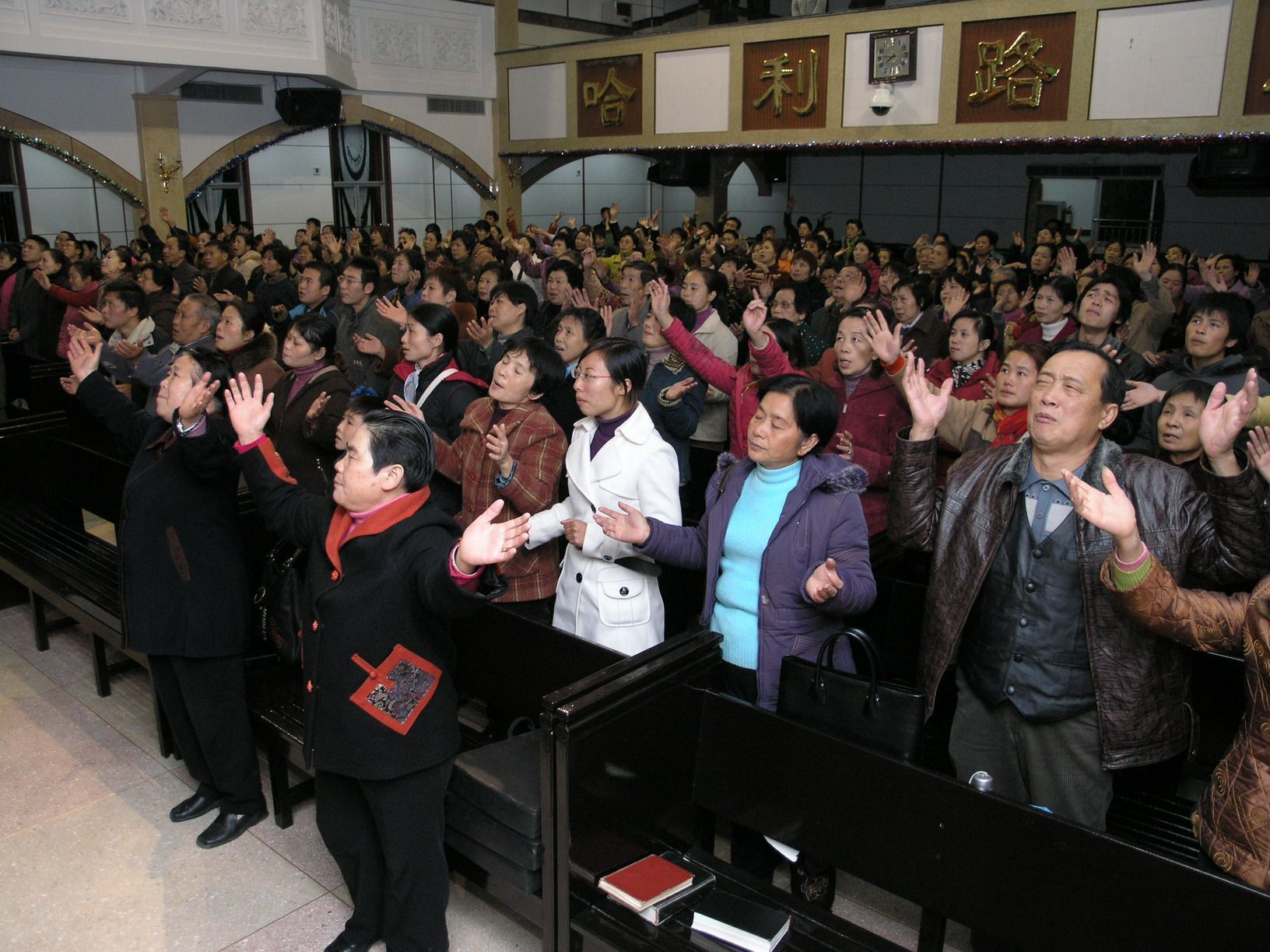© This article is an extract from Paul Hattaway's epic 656-page China’s Book of Martyrs, which profiles more than 1,000 Christian martyrs in China since AD 845, accompanied by over 500 photos. You can order this or many other China books and e-books here.
1861 - Che Jinguang
October 16, 1861
Boluo, Guangdong
An engraving of Robert Morrison and his Chinese co-workers translating the Bible. Morrison was the first Protestant missionary in China, arriving in 1807.
The London Missionary Society was the first Protestant group to work in China, when Robert Morrison arrived in 1807. By the late 1850s the work was slowly advancing in Guangdong Province. In the town of Boluo (known in Cantonese as Poklo, approximately 40 miles or 65 km east of Guangzhou), the 1862 report of the London Missionary Society mentioned a Chinese martyr named Che Jinguang (Chea Kam-kwong in Cantonese).
Che had worked as a keeper of the Confucian Temple in Boluo until well into his fifties, before becoming the first Christian at Boluo in 1856. Che heard the gospel when he received literature from two Christians working with the British and Foreign Bible Society. Che asked to be baptized, showing the evangelists his ancestral tablet, which he had defaced with a chisel to prove his commitment to Christ. Che travelled to Hong Kong to gain further instruction from the missionaries. Pastor He Jinshan and Scottish missionary James Legge were reluctant to baptize Che, suspecting he wanted to join the Church in order to secure a paid job with them. Che persisted,
“and one night he waited outside for Legge after a prayer meeting. It was raining, and as Che let the rainwater fall on his head, he told Legge that God would baptize him even if Legge would not. Legge then baptized Che, and Che returned to Boluo and began a self-supported ministry as an itinerant evangelist.”[1]
Che was the first Protestant believer in Boluo, but he was not to remain alone for long. In 1858 he returned to Hong Kong with two other new believers, followed in 1859 with two more. In 1860 Che Jinguang turned up at Hong Kong with nine more new converts, and told the missionaries there were dozens more back in his village. The foreign missionaries were astounded by the success Che was encountering, for China at the time was considered a difficult place to present the gospel and converts were generally few and far between. The Rev. John Chalmers decided he should visit Boluo to see for himself what God had been doing there. Chalmers and a Chinese co-worker arrived in Boluo in the spring of 1860, where
“they were greatly cheered both by the steadfastness of the converts already received, and by the urgent application of many of the people for Christian baptism; of these, forty-four were deemed suitable subjects for that ordinance. In January 1861, sixteen more persons from Boluo were received into the Church…making a total, up to that time, of eighty-five individuals who had publicly come over to the Christian camp.”[2]
The Holy Spirit was far from satisfied with this small harvest, however, and in May 1861 an additional forty people were received for baptism in Boluo. Plans to construct a church building were commenced. The missionaries marvelled at how “the seed of truth sown in the heart of an aged and obscure man had been watered by the grace of the Holy Spirit, and through successive years it had brought forth thirty, sixty, and a hundred-fold.”[3]
Satan and his forces set about to destroy the Boluo Church. Almost all of the converts had been simple farmers from the village communities surrounding Boluo, and now the ‘high class’ men from the town had decided to stop the movement before it grew any larger. James Legge travelled to Boluo in October 1861 and spoke with the local officials and the Governor of Guangdong, receiving assurances that no more harm would come to the believers.
Just two weeks after Legge returned to Hong Kong, however, the authorities not only allowed a vicious persecution of the Christians in Boluo, they were directly responsible for instigating a riot that resulted in the martyrdom of Che Jinguang. Legge later wrote,
“When I left, Che…was full of joy, as I was, and unsuspicious of danger. On the evening of the 13th of October, he was forcibly carried off by a body of ruffians…. They took him to a village not far off, and hung him up all night by the arms and feet to a beam. During the two following days he suffered much torture and insult, and on the 16th he was taken to the river side, and, on refusing to renounce Christianity, was put to death, and his body thrown into the stream.”[4]
The elderly Christian Che Jinguang had been promoted to the glorious presence of the Heavenly Father, and has entered the history books as the first recorded Chinese Protestant martyr.
1. Taken from a profile of Che Jinguang on the www.prayforchina.com website. For more information on this first Chinese Protestant martyr, see Lauren Pfister, “The Proto-Martyr of the Chinese Protestants: Reconstructing the Story of Chea Kam-Kwong,” Unpublished manuscript, May 2003; and Ma Jingquan, “Chea Kam Kwong: China’s First Martyr,” Hui Xun no.242-43 (Hong Kong Council of the Church of Christ in China, July 1997).
2. L.M.S. Annual Report (1862), 26-28; cited in Arnold Foster, Christian Progress in China: Gleanings from the Writings and Speeches of Many Workers (London: The Religious Tract Society, 1889), 89.
3. Foster, Christian Progress in China, 90.
4. L.M.S. Annual Report (1862), 26-28; cited in Foster, Christian Progress in China, 90.





